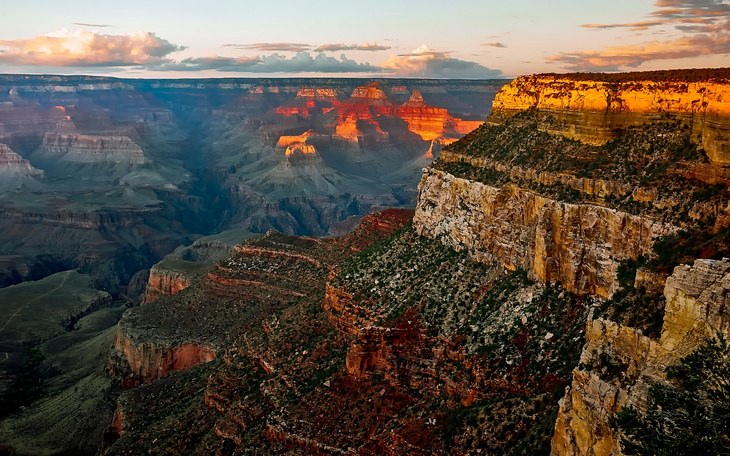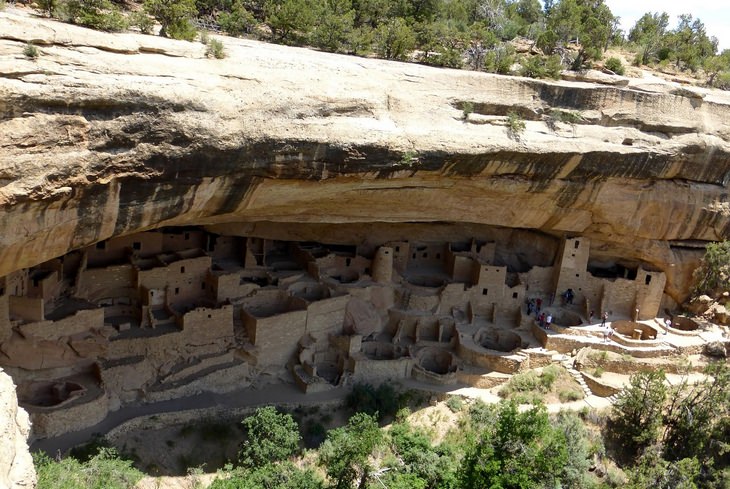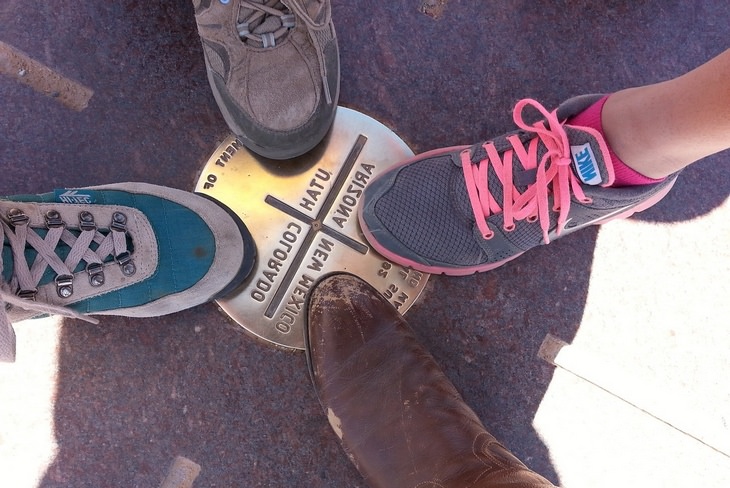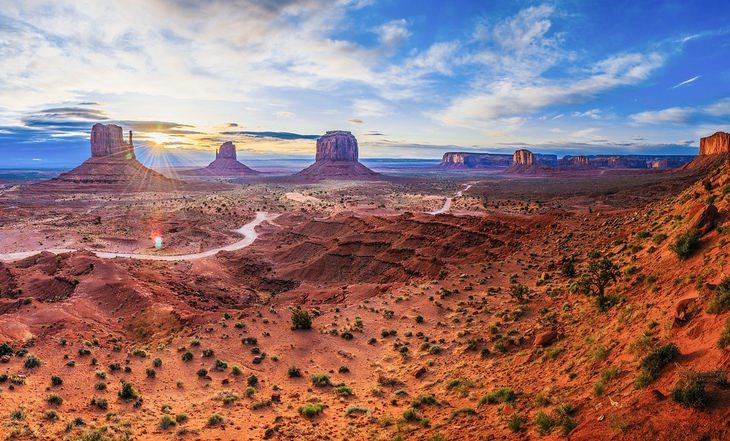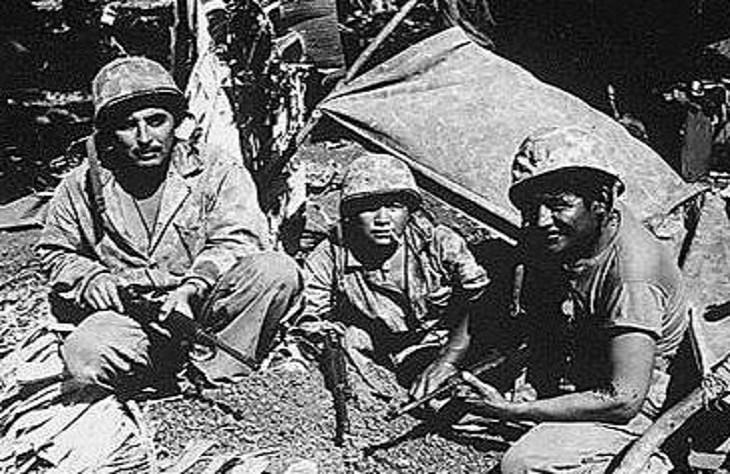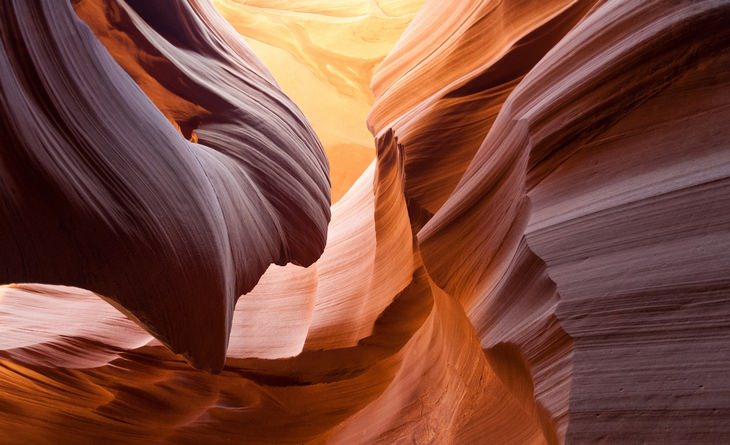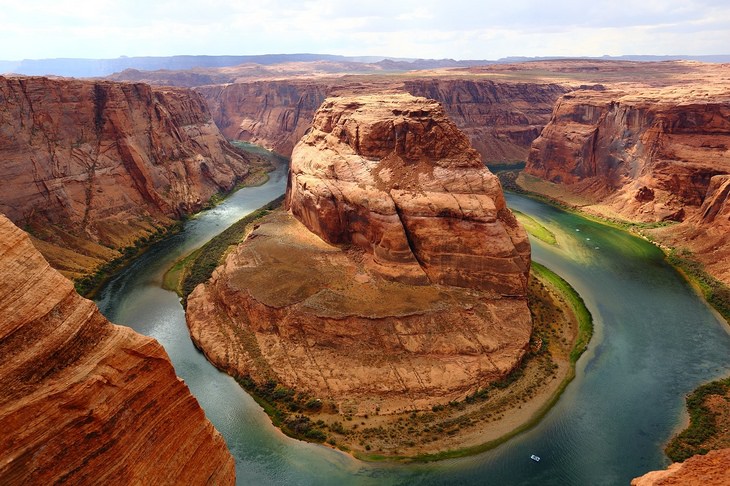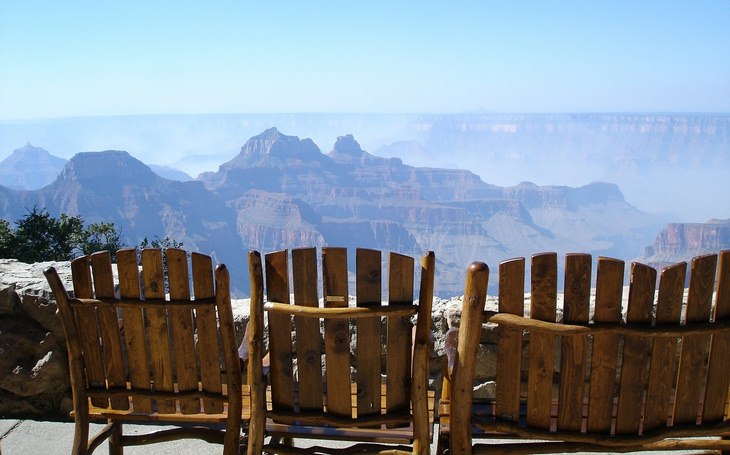The four corners are the meeting place of Arizona, Utah, Colorado and New Mexico. Most of the region is governed by Native American Nations, the largest of which being the Navajo, with the tribe preserving many of the parks, monuments, and museums in the area.
It was also the homeland to the Ancestral Pueblo culture, the descendants of which still live in reservations in New Mexico. The Ancestral Pueblos are famous for their intricate architecture and settlements for which they are named (pueblo meaning “town” in Spanish). They are called Anasazi by the Navajo, but that name is discouraged by modern-day Pueblos, as it is deemed derogatory (it means “ancient enemies”).
We’ll begin our route in Colorado, in the Mesa Verde National Park where we can find some of the best-preserved Ancestral Pueblo ruins and then travel west and south to the North Rim.
Mesa Verde National Park
Mesa Verde was established as a national park by Theodore Roosevelt in 1906 with the intent to preserve and study the works of the Ancestral Pueblo culture that called this place home from the 6th century up until the 13th century.
It protects around 5,000 archeological sites and houses a substantial number of cliff dwellings- hidden houses built inside natural alcoves underneath great cliffs. The greatest of these is the Cliff Palace, which has about 150 rooms and 23 kivas - round pool-like structures that were used as temples and forums. The cliff dwellings are open for guided tours during springtime and summer.
Four Corners Monument
Okay, we admit it’s a bit corny, but who doesn’t want to take a picture while simultaneously standing in four different states? Luckily, the monument isn’t just an opportunity to share a great picture with your family and friends. The site is managed by the Navajo Nation and houses Native American vendors who sell traditional food and craftsmanship.
Monument Valley
If you think you’ve seen this landscape already- you’re probably right. The iconic buttes, rising hundreds of feet above the desert plains are a staple of Westerns and have been filmed too many times to count.
Monument Valley is under Navajo protection, and there’s a 20$ cash per vehicle admission price, and there are guided tours through the park. Be aware that camping is forbidden in the valley, and it is officially closed to visitors at 8 PM.
Many of the natural phenomena here are sacred to the Navajo, and as such, it is not allowed to climb the rocks in the valley. Drones are also not allowed.
Kayenta and Tsegi Canyon
Kayenta is a rather quaint Navajo town in northwest Arizona, but it’s worth the travel. The town’s Burger King doubles as a museum dedicated to the WWII Navajo code talkers.
Diné Bizaad, the language of the Navajo people, has a highly complex grammar that isn’t mutually-intelligible with any of its relatives. For this reason, the US military employed Navajo soldiers to pass encrypted messages in the Pacific Theater of the war. Their code was never broken, and their service was crucial to achieving an American victory.
A short drive from Kayenta is Tsegi Canyon and the Navajo National Monument, where you can find Pueblo cliff-dwellings much like the ones in Mesa Verde.
Antelope Canyon, Horseshoe Bend and Lake Powell
Our next stops form a triangle around Page, Arizona. A favorite of Microsoft Windows wallpapers, Antelope Canyon is incredibly popular with tourists, as the hike through the narrow crevice of the canyon is shaded and beautiful beyond words.
The rock walls of the canyon have been smoothened and sculpted by water over thousands of years, giving the stone a spiraling, creamy quality that is accentuated by rays of sunlight breaking through the fissure above. The site is supervised by the Navajo Nation, and you would have to book a guided tour to enter.
To the north of Page, the desert gives way to the scenic Lake Powell. Lake Powell isn’t technically a true lake and it wasn’t always there; it was formed with the construction of the 700-feet high Glen Canyon Dam in the ’60s, as a measure to protect Page from the Colorado River flooding over. Nowadays, it is a major tourist attraction, with cruises and boat trips to the Rainbow Bridge, the largest natural bridge in the US.
If you follow the Colorado downstream from the Glen Canyon Dam, you’ll come upon a dramatic turn in the river, creating one of the most breathtaking vistas in America. The bend is named for its horseshoe shape, as it hugs the cliff on the other bank. Make sure to bring a wide-angle lens camera.
North Rim
You’ve made it! At 8,000-feet elevation, there is no better spot to view the Grand Canyon from than the North Rim. If you find yourself in need of a well-deserved rest after your voyage here, you can book a room at the Grand Canyon Lodge with a balcony overlooking the canyon.
Make sure to take the short (0.75 miles) hike to Bright Angel Point for the best view of this iconic American landscape.

